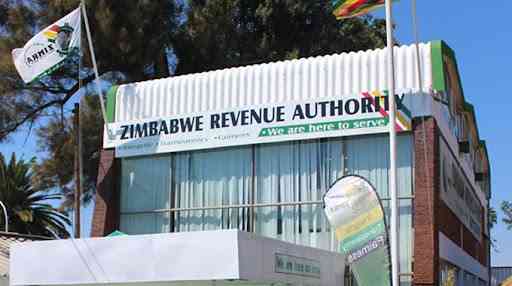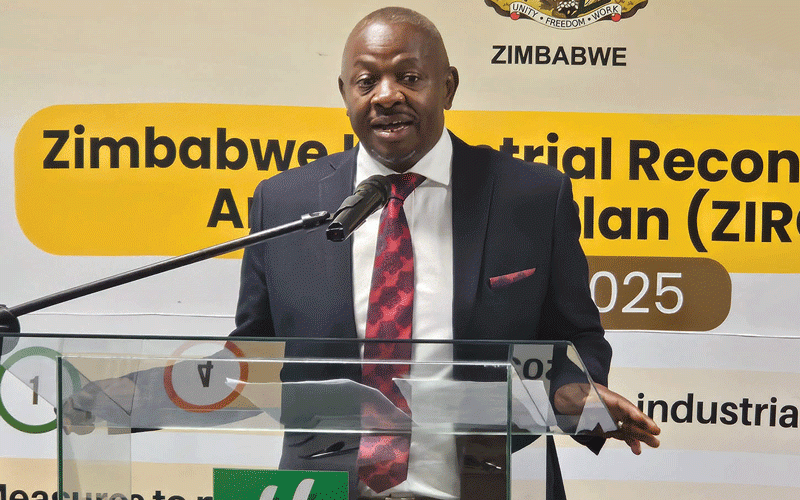
A FORTNIGHT ago, this column argued that the balance of risks to the outlook is tilted largely to the downside. The looming risks covered include, among others, unpredictable policy environment, electoral contestations, climatic shocks, commodity price volatility, Zimbabwe dollar volatility, debt distress, domestic supply-side shocks like electricity shortages and high fuel costs, and deteriorating global geopolitics.
These likely outlook risks pose a great threat to government revenue collection, which in turn will exacerbate debt distress and subdue public spending on essential public infrastructure, public services, and social welfare programmes.
As such, there is a need for the Zimbabwe Revenue Authority (Zimra) to adopt innovative strategies to boost tax revenue collection and help reduce the budget deficit.
So, this week I proffer some key strategies the tax authority should explore to minimise revenue risks expected next year.
Monitoring external environment
Several factors in the external environment affect Zimra’s operating context, including economic conditions, public opinion, government policy, and legislation.
All these factors have a potential impact on tax compliance. Zimra should consider the legislative context to identify weaknesses and threats that may need to be addressed or mitigated through administrative practices.
Also, public opinion represents a crucial consideration. The regard in which Zimra is held within the community has a direct impact not only on the community attitude towards compliance but also on the ability of Zimra to successfully administer the taxation system — and on the morale of revenue agency staff.
- Mavhunga puts DeMbare into Chibuku quarterfinals
- Bulls to charge into Zimbabwe gold stocks
- Ndiraya concerned as goals dry up
- Letters: How solar power is transforming African farms
Keep Reading
Generally, the costs of tax compliance to the community must be commensurate with the level of compliance risk exposure if Zimra is to be able to meet its global objectives of collecting the revenue in a manner that sustains community confidence.
Community standards and the potential impact of compliance obligations are aspects of the operating context that Zimra must clearly understand to frame an effective compliance treatment programme.
Communication programmes
To increase voluntary tax compliance, Zimra must engage in information campaigns to ensure sufficient awareness of tax laws, including amendments/changes.
National channels can be used for generic taxpayer information that applies to the majority of taxpayers while local channels can be used to reach out to specific taxpayers in a district or a region.
Zimra can increase compliance by explaining the use of money collected. I believe that showing taxpayers the social utility of taxes can help change their perceptions about tax, which too often overemphasise the costs, while dismissing the benefits.
In countries like Zimbabwe where there is less taxpayers' trust in the government and its institutions, it is crucial to provide taxpayers with this kind of information as it can create a sense of accountability.
Also, there is a need for effective mass tax communication targeting newly registered taxpayers to change their perceptions about tax. While this is not an easy task, it is my conviction that successful tax initiatives are not those that only inform a taxpayer about their rights and duties but do so in the most innovative way.
Apart from indicating the sanctions associated with failure to pay taxes, the initiative can also provide taxpayers with reasons why they are better off paying taxes.
This can include the use of alternative means of communication and the adoption of more personal approaches like field visits, personal letters, and campaigns, such as lotteries and outreach programmes to encourage tax compliance.
Furthermore, Zimra should not only assist taxpayers in complying with tax requirements but should also help them to have a basic understanding of taxes and how they can discover useful information on its website and online service centre.
This initiative can comprise a general media campaign, pamphlets for direct contact with specific taxpayer cohorts, and self-help guidance on the Zimra website.
Making use of videos, the key messaging can include reminders of payment deadlines and explanations on how to use online services for filing tax returns and payments.
In addition, Zimra can organise tax events, such as tax days, tax weeks, and tax fairs to gather taxpayers around tax.
The main aspects of these tax events include taxpayer visits at workplaces to collect opinions and suggestions, seminars at schools and universities, and posters on tax awareness for the general public. This will result in a more knowledgeable and compliant population, improved relationships with taxpayers, and a positive perception of the tax administration.
Building internal capacity
There are key internal capabilities that can exert an impact on risks associated with tax administration. These include organisational structure, organisational culture, staff and business capabilities, and information technology and business systems.
For instance, the impact of Zimra’s organisational structure on the tax compliance risk management process should not be underestimated. Zimra must strengthen processes that deal with potential adverse effects of organisational fiefdom, which can lead to sub-optimal compliance.
As such, cross-organisational mechanisms should be established and utilised to ensure that organisational strategies are integrated and that well-founded decisions can be made.
To attain this, deliberate steps must be taken to establish a community of interest in risk assessment within Zimra. Symposiums focusing on common infrastructure, methodologies, performance evaluation, strategic information, privacy issues, and data integrity can be conducted to address challenges faced in identifying and assessing tax compliance risks.
Also, measures can be taken to join organisationally distant units to focus on practical compliance problems and solutions. Furthermore, organisational improvements can be achieved by introducing a matrix organisational style (tax-topical responsibilities) in tax administration, thus allowing more flexible, accurate, and expert handling of emerging tax compliance problems.
Again, Zimra’s tax compliance risk management must be fundamentally based on the ability to receive numerous pieces of information, and combine and interpret them to inform intelligence about the external environment.
This conversion of huge volumes of data to intelligence would require strong IT capabilities. It is often impractical for Zimra to manually examine every single tax return.
More so, new technologies can be used to curb corruption perpetrated either by taxpayers or Zimra officials. Zimra must increase the use of drones and other detecting technologies to secure all ports of entry.
It must also employ big data analytics in the field of taxation where predictive analysis and visualisations that determine trends, patterns, and relationships in huge volumes of data provide valuable insights.
For example, Zimra can use big data to search through vast amounts of records to find evidence of the use of tax havens and data-matching to identify taxpayers that are not meeting their compliance obligations.
It is difficult to use traditional methods to expose corruption involving large quantities of data.
But thanks to digitalism, fraud analytics can now detect patterns of suspicious transactions and with real-time detection, Zimra will be able to detect, stop, and remediate fraud.
Also, Zimra can utilise mobile technology and applications to harness data and gain faster insights.
Last but not least, Zimra can use forensic tools, such as Self-Monitoring, Analysis, and Reporting Technology (SMART) to combat corruption risk.
These can handle data velocities as they involve real-time analyses of transactions, predictive modelling, anomaly detection, and risk-scoring algorithms seeking to flag or stop suspicious transactions, such as illicit financial flows.
But even after the implementation of advanced IT systems and technologies, Zimra must also increase investment in its analytical and research competencies to improve revenue risk identification. In addition, skills in areas, such as mathematics and statistics, that are perhaps not immediately associated with revenue administration can be particularly valuable in the identification and sizing of risks. Developing an organisation’s skills involves both training people to design and operate systems and in research and intelligence activities.
On-going attention to Zimra staff development, not just in their knowledge of the law but in their understanding of taxpayer behaviour, running a business and the issues faced by business people, such as cash flow management cannot be over-emphasised.
There must be confidence that Zimra staff have the necessary compliance capabilities to permit them to identify non-compliance where it occurs.
As such, there is a need to capacitate tax officials through training on sophisticated tax issues like profit-shifting.
There is also a need for bilateral, regional, and international exchange and cooperation.
This may include tax information exchange agreements (TIEA) and country-by-country reporting (CBC).
Lifestyle audits
Many rich and connected individuals are taking advantage of loopholes in legislation and existing weak institutions. As such, they are not paying their fair share of tax to the government.
Currently, there is a lack of lifestyle audits on those living lavishly to compare known income and the standard of living to identify gaps and indicators that someone is living above their means.
Therefore, there is a need for Zimra to advance and stimulate debate around random lifestyle audits for public officials and rich individuals to deter tax evasion.
Sibanda is an economic analyst and researcher. He writes in his personal capacity. — brasibanda@gmail.com or Twitter: @bravon96










